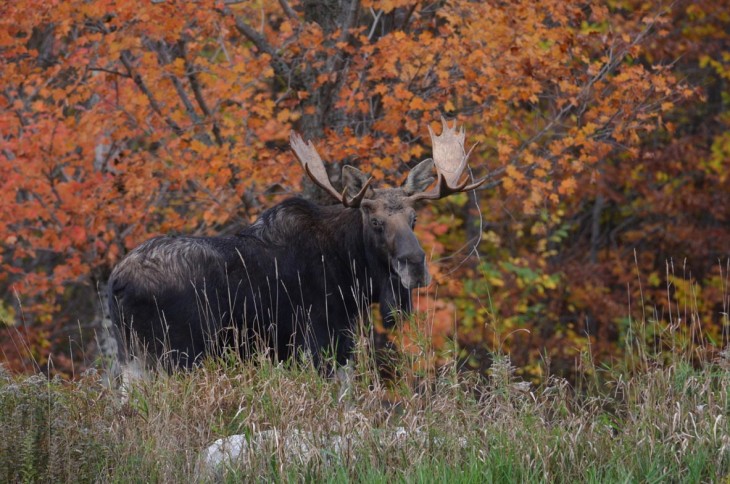The northeastern population of moose, subspecies Alces alces americana, declined during the nineteenth century as a result of hunting and forest clearing for agriculture. Hunting regulation and reforestation during the next century allowed for the return of animals from their strongholds in western and northern Maine and southern Quebec. By the 1970s and 1980s, populations across the Northeast had recovered, reaching their highest recorded densities in the early 2000s.
Now, as northeastern moose are again declining due to substantial impacts from winter ticks and climate change, researchers are working to understand genetic diversity, which can be a critical factor for populations to adapt to changing conditions. A team led by Elias Rosenblatt of the Vermont Cooperative Fish and Wildlife Research Unit at University of Vermont set out to understand current genetic variation and connectivity among Northeast moose populations, in the process assembling one of the largest genetic datasets generated for the North American moose.
The team’s analysis of hair and tissue samples from 529 moose across New York, Vermont, New Hampshire, Maine, Massachusetts, and the province of Quebec showed relatively low genetic diversity, but also little evidence of inbreeding. The researchers proposed that moose share similar genetic material as a consequence of “founder effects,” which occur when populations are established by a limited pool of genetic diversity, and “bottlenecks,” when populations decline and lose diversity. Both of these situations result in temporarily smaller breeding populations and increase the likelihood that mates will share a common ancestor.
Writing in the journal Conservation Genetics, the researchers described a “well-connected, core complex of moose populations.” Populations in Vermont are connected to New Hampshire and western Maine; western Maine populations Quebec, as are moose in northern Maine. Outlying populations in New York and Massachusetts have lower relative gene flow to and from other sampled areas, with a primary connection via Vermont and to a lesser extent western Quebec. Northeastern Quebec, located across the Saint Lawrence River, had the highest degree of genetic differentiation from all other sampled areas. “The Saint Lawrence is a partial barrier to gene flow between sampled areas, with evidence of population connectivity across upper reaches of the Saint Lawrence River,” said Rosenblatt. Movement patterns that result in population connectivity may have helped reduce inbreeding despite increasing fragmentation of the landscape. The persistence of this connectivity, given a shifting climate and increasing habitat loss, is uncertain.


